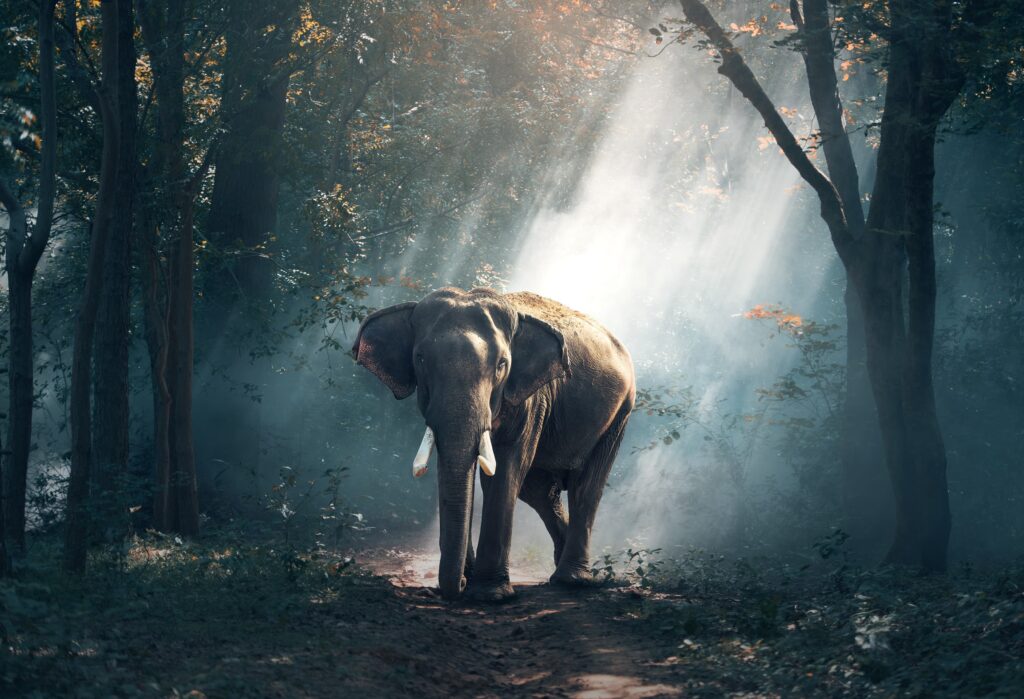The brown or common bear, is a predatory mammal of the bear family. It is one of the largest and most dangerous species of terrestrial predators. There are about twenty subspecies of the brown bear, differing in appearance and distribution range.
Description and Appearance
The appearance of the brown bear is typical of all members of the bear family. The body of the animal is well developed and powerful.
Appearance.
A high withers are present, as well as a rather massive head with small ears and eyes. The length of the relatively short tail varies between 6.5-21.0 cm. Paws are quite strong and well developed, with the presence of powerful and unstretched claws. The feet are very broad, five-toed.
The size of the brown bear
The average length of the brown bear inhabiting the European part is usually about one and a half to two meters with body weight of 135-250 kg. Specimens inhabiting the middle belt of our country are smaller in size and may weigh about 100-120 kg. The largest are considered to be the Far East bears and grizzly bears, which often reach three meters in size.
Skin color
The coloration of the brown bear is quite variable. Differences in the coloration of the coat depend on the habitat, and the color of the fur can range from a light pale shade of pale to bluish-black. The standard color is considered brown.
Longevity
Under natural conditions, the average lifespan of the brown bear is about twenty to thirty years. In captivity, this species is capable of living fifty years, and sometimes more. Rare individuals survive in natural conditions up to the age of fifteen years.
The most common subspecies:
European brown bear with a body length of 150-250 cm, tail length of 5-15 cm, height at the withers of 90-110 cm and an average weight of 150-300 kg. This is a large subspecies with a powerful build and a pronounced hump on the withers. The overall coloration varies from light grayish-yellow to blackish-dark brown. The fur is thick and rather long;
Caucasian brown bear with an average body length of 185-215 cm and a body weight of 120-240 kg. The coat is short, coarse, and more pale in color than the Eurasian subspecies. The coloration varies from pale straw-colored to uniform gray-brown. There is a pronounced, large, dark-colored spot at the withers;
The East Siberian brown bear, with a body weight of up to 330-350 kg and a large skull. The fur is long, soft and dense, with a pronounced luster. Wool has a light brown or blackish-brown or dark brown coloration. For some specimens characterized by the presence in the color quite clearly visible yellowish and black shades;
Ussuri or Amur brown bear. In our country, this subspecies is well known under the name black grizzly. The average body weight of an adult male may range from 350-450 kg. The subspecies is characterized by a large and well-developed skull with an elongated nose. The skin is almost black in color. A distinctive feature is the presence of long hair on the ears.
One of the largest subspecies in our country is the Far Eastern or Kamchatka brown bear, the average body weight of which often exceeds 450-500 kg. Large adults have a large, massive skull and a wide, raised front part of the head. The fur is long, dense and soft, pale yellow, blackish-brown, or completely black in color.
The habitat where the brown bear lives
The natural range of brown bears has undergone significant changes over the past century. Previously, the subspecies was found in vast areas stretching from England to the Japanese Islands, and from Alaska to central Mexico.
The habitat of brown bears has changed during the last centuries, one of the reasons is mass extinction, which forced the bears to migrate.
Today, as brown bears are being extirpated and driven out of their living areas, the most numerous groups of the predator are registered only in western Canada, as well as in Alaska and forest areas of our country.
Lifestyle of the bear
The predator’s activity period is at dusk, early morning and evening hours. The brown bear is a very sensitive animal, which orientates in the space mainly by means of hearing, as well as by smell. A characteristic feature is poor eyesight. Despite their impressive size and large body mass, brown bears are almost silent, fast and very easy to move predators.
Brown bears are sedentary animals, but young bears that have separated from their families can roam and actively search for a mate. Bears mark the boundaries of their territory and defend them. In summer, bears rest directly on the ground, nestling among grasses and low shrubs. With the onset of autumn, the animal begins to prepare a safe winter shelter.
